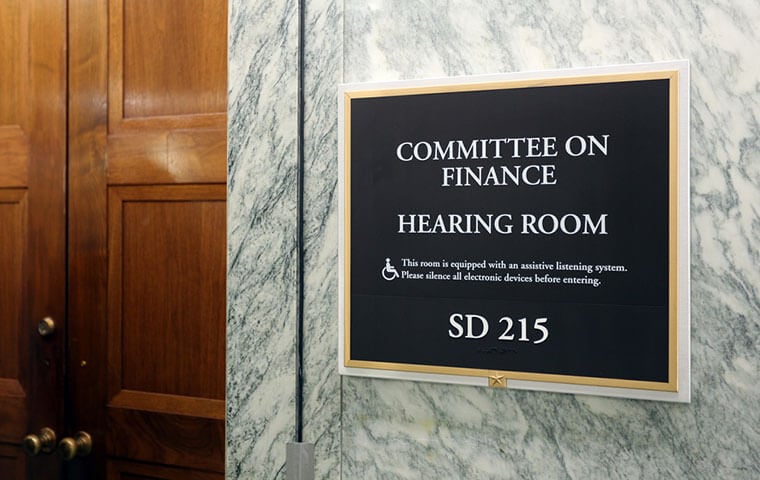 Sens. raised concerns including the potential for AI vendors leaking sensitive business data to which they are given access. Image: Katherine Welles/Shutterstock.com
By: FEDweek Staff
Sens. raised concerns including the potential for AI vendors leaking sensitive business data to which they are given access. Image: Katherine Welles/Shutterstock.com
By: FEDweek StaffBipartisan leaders of the Senate Finance Committee have queried DHS, CBP and HHS on how they are using artificial intelligence and whether they are applying “proper guardrails” in its use.
The letters from Sens. Ron Wyden, D-Wash., and Mike Crapo, R-Id., are the latest in a series of moves to scrutinize and control agency use of AI, which included recent guidance from the White House and movement in Congress of several bills addressing issues such as privacy and the potential for agencies to make decisions without human involvement.
In a letter to CBP and its parent DHS, for example, they said the CBP “can leverage AI to more efficiently conduct trade enforcement and trade facilitation activities. However, if the risks posed by AI are not managed, these tools could result in unsafe or otherwise harmful outcomes for the American people.”
They raised concerns including the potential for AI vendors leaking sensitive business data to which they are given access, which “could create serious competition and intellectual property problems for companies across the board.”
Similarly, in writing to HHS, they said that department “can employ these tools to enhance efforts related to federal health and human services programs, and ongoing innovations may provide new opportunities and challenges . . . However, some recent examples of tools intended to enhance patient care have under-performed or offered biased results, raising serious questions and concerns.”
They cited a 2022 GAO report saying that many machine learning technologies available for medical diagnostics “have not been adequately tested or validated” and citing the potential for bias in decision-making.
Senate Eyes Vote to Pay Federal Employees Working Unpaid
Series of Bills Offered to Address Shutdown’s Impact on Employees
Public Starting to Feel Impact of Shutdown, Survey Shows
OPM Details Coverage Changes, Plan Dropouts for FEHB/PSHB in 2026
Does My FEHB/PSHB Plan Stack Up? Here’s How to Tell
2025 TSP Rollercoaster and the G Fund Merry-go-Round
See also,
TSP Takes Step toward Upcoming In-Plan Roth Conversions
5 Steps to Protect Your Federal Job During the Shutdown
Over 30K TSP Accounts Have Crossed the Million Mark in 2025

